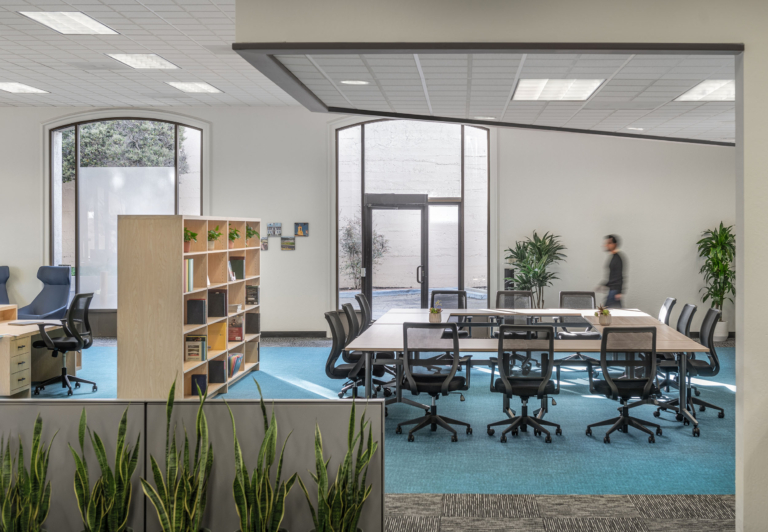The City of South San Francisco identified a need for an underserved community and found a solution within a vacant bank building and an architect who shared the vision.
Where it All Began
The Economic Advancement Center (EAC) was born out of the pandemic. The City of South San Francisco, the “City of Industry” has long been attracting and supporting emerging and leading companies. The City identified that there was a large population of underserved residents and smaller business owners that would need support to move forward in the post pandemic world. The EAC would house two non-profit organizations, JobTrain and Renaissance, to provide bi-lingual (English and Spanish) workforce development and entrepreneurship service for the community. “People are trying to come out of the pandemic and start something fresh,” said Ernesto Lucero, the City’s Economic Development Coordinator. “This reuse project is essentially the posterchild for that. It fits into the city’s priorities and our mission.” Our role at WDA was to support the City’s vision by creating a dynamic service environment that would draw in the community.
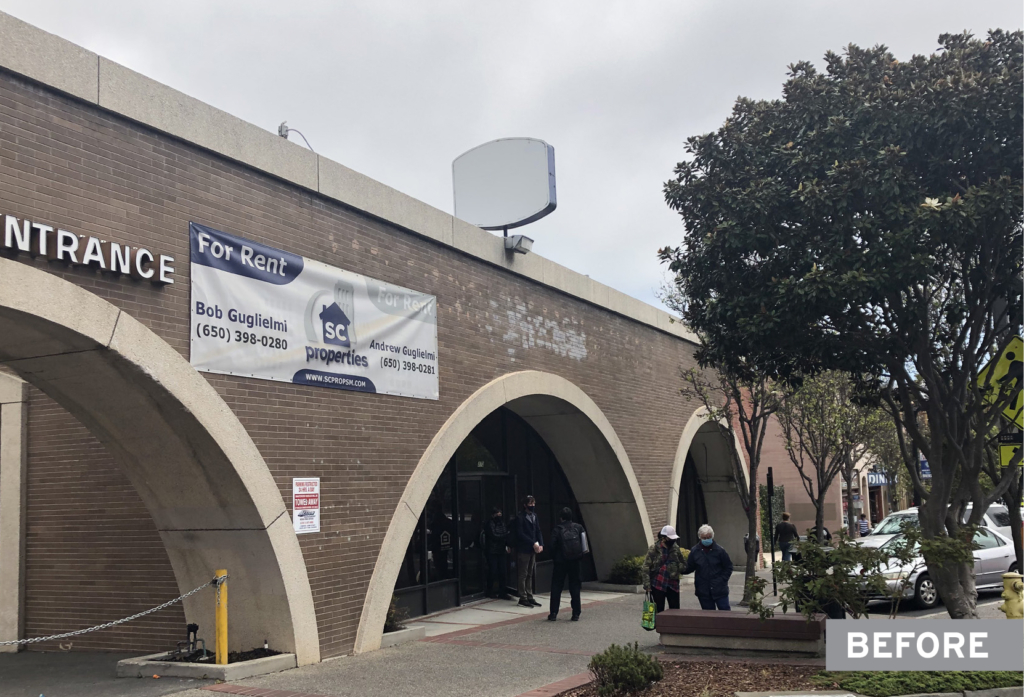
Downtown Model – Win Win
Put the services where they are needed and are easy to access. Locating the EAC in a long vacant former bank building on a prominent corner downtown was the ideal option. “That site was vacant for 18 or 19 months, so choosing it for the EAC killed several birds with one stone,” explained Ernesto. “We filled a vacant storefront, activated another City property – the adjacent breezeway – and utilized a private parking lot. The EAC is also near a large parking garage which is great for when we host larger events, on a main city corridor and close to public transportation, so this location was ideal.”
Being in a downtown location has been a big help for the tenants at the EAC by providing opportunities to interact with the community actively and passively. “People are curious about the building,” said Katie Donner, also of the City of South San Francisco. “We get a lot of clients who are walk-ins. People come in and realize what we do and are like, ‘Oh, I need help with that!’. The downtown has the resources we need, and this is definitely where the people who need us most tend to be too.”
The City believed in their future tenants, JobTrain and Renaissance, to deliver on their mission to help the local businesspeople of the future, who themselves would eventually contribute to a thriving Downtown.
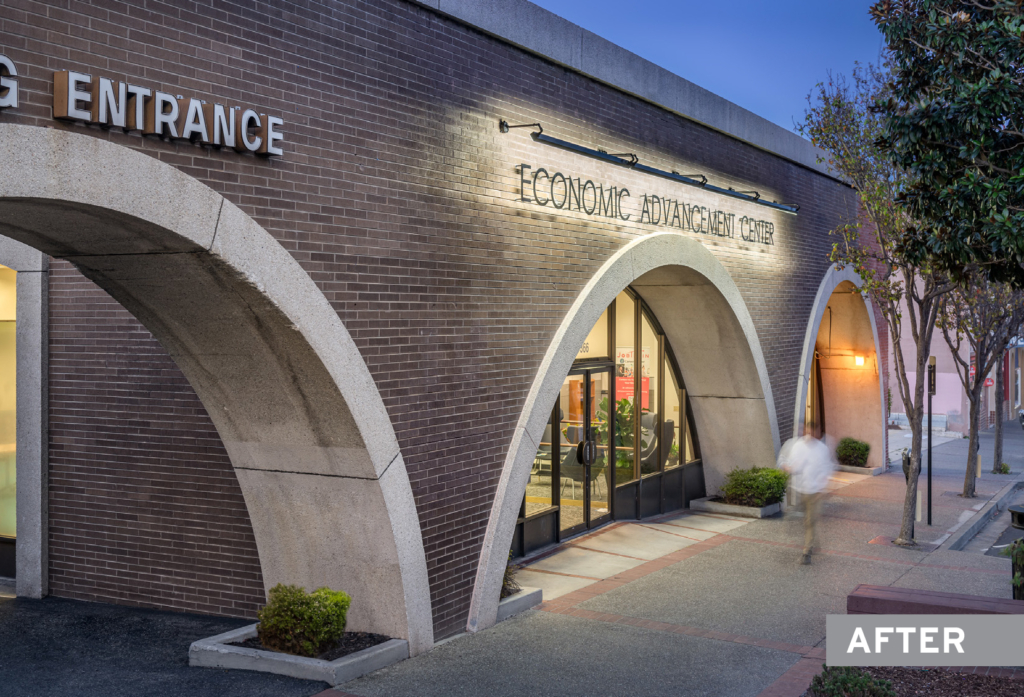
Benefits of Repurposing Buildings
Repurposing a building can be a significant cost-saving measure when it comes to creating new workplaces which, for this project, was a key consideration knowing that funds spent on the space couldn’t be spent on the necessary public services being provided. Existing buildings often have a lot of systems and infrastructure in place that can be reused. “It’s exciting to find ways to give existing buildings new life,” said WDA Commercial Practice Leader, David Plotkin. He explains how rehabilitating vacant buildings takes advantage of the existing resources and amenities without having to start over.
“We prioritize reusing pieces of the building that would typically be more costly to replace,” said David. “We see how much of the mechanical, electrical, and plumbing systems we can reuse. Ideally, you would reuse break areas and restrooms for example, and even if you must expand for ADA, you at least keep them in the same place,” he said. “You also look at the existing walls, minimize any new partitions that need structural reinforcement and check which existing walls have more permanence that would be a significant cost to change, such as at the EAC where there was an old, concrete walled vault which we just reused as a conference room.”
“It can be easier to build from ground-up, but a significant portion of carbon emission comes from building materials and waste generated for new construction projects,” David said. “By repurposing existing buildings, we can preserve resources and reduce our carbon footprint.”
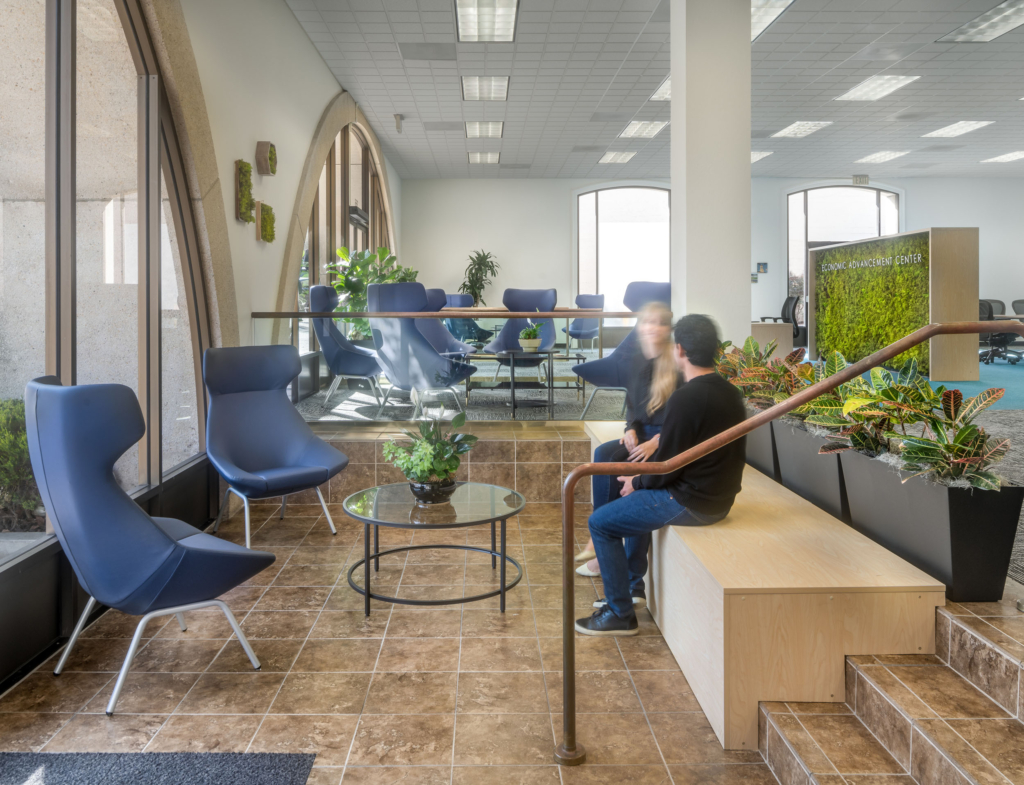
Not Your Typical Public Service Building
“It had to be an inviting space that people were curious about,” said Ernesto. “A place people should want to go into, and hang out in.” Our clients, the Economic and Community Development Department at the City of South San Francisco, wanted ‘a government building that didn’t look like a government building’. WDA approached the project like we would in designing a creative start-up environment that promotes flexibility, opportunities for collaboration coupled with elements of retail design techniques used to engage the public. “We positioned the flexible training program and collaboration lounges along the street front windows to showcase the activity inside. We added natural materials that have warmth,” said David, “more specifically, we introduced biophilia with a moss wall at the entrance, an architectural focal point that creates flexible, dynamic space around it. This natural material draws you in and welcomes you upon entry.”
The use of materials was important in maximizing value while creating that entrepreneurial environment. “We also included vibrant colors,” David said, “the mossy green, the light wood, the more vibrant blue carpet adds color, it’s playful and has a certain dynamic characteristic that speaks to a sense of innovation and feels much less like an institutional space.”
“WDA understood our desire to avoid the look and feel of a typical government building,” said Katie Donner, “and for it to look like a place that was inviting and welcoming, and I think they really achieved that,” she said. “Everybody who walks by that front desk looks in the window and wonders, ‘What is going on here?’
“When we saw some of the designs of what the space would look like, we felt it really tapped into the vision that we had for the space too.” Ernesto said. “Specifically, the front desk area – it really created a focal point and was even better than anticipated. The design reflects the entrepreneurial and innovative environment we were hoping to achieve.”
When WDA got involved, we didn’t have a big budget, and we weren’t sure if we even needed to bring on an architect. I look back and wonder if we hadn’t gone that route, what would it even look like? The space probably wouldn’t be the same – it would look like an unremarkable government building.”
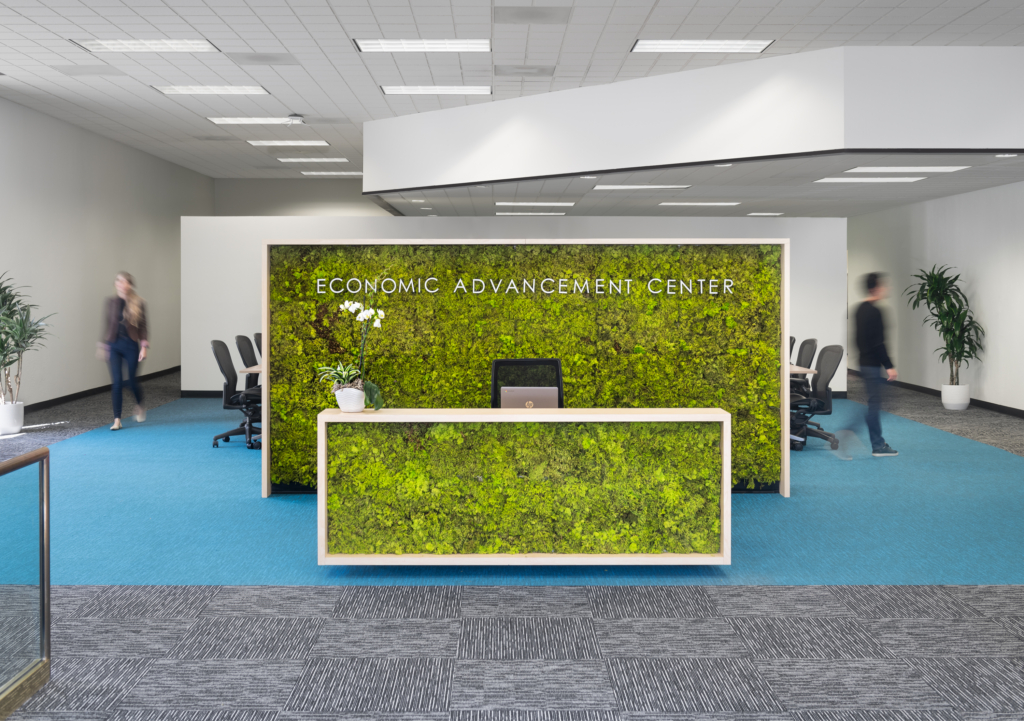
More of a Good Thing
Several other City Councils in San Mateo County have recently toured the facility and are interested in recreating a similar model to help serve the underprivileged in their communities with maximum impact on a limited budget. Federal funds would also be requested, and existing buildings would be reused to help spur local urban activity in their public spaces.
“We liked that you were local and were really responsive to the ever-changing needs of this very fluid project,” said Ernesto. “It’s been a pleasure working with you guys.”
“There are many aspects of a project we, as architects, don’t have control over,” said David. “So, we feel honored to be part of a project that has been so successful for the City and that it is being used as an example of what can be done in other jurisdictions.”
Want to learn more about this model or continue this conversation? Let’s talk!
By Neil Ginty and Sarah Mergy
Contributors: Brenna Daugherty, David K. Plotkin, Wendy Osaki
